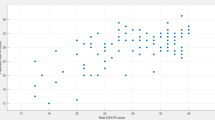Abstract
We introduce a smart sensor-based motion detection technique for objective measurement and assessment of surgical dexterity among users at different experience levels. The goal is to allow trainees to evaluate their performance based on a reference model shared through communication technology, e.g., the Internet, without the physical presence of an evaluating surgeon. While in the current implementation we used a Leap Motion Controller to obtain motion data for analysis, our technique can be applied to motion data captured by other smart sensors, e.g., OptiTrack. To differentiate motions captured from different participants, measurement and assessment in our approach are achieved using two strategies: (1) low level descriptive statistical analysis, and (2) Hidden Markov Model (HMM) classification. Based on our surgical knot tying task experiment, we can conclude that finger motions generated from users with different surgical dexterity, e.g., expert and novice performers, display differences in path length, number of movements and task completion time. In order to validate the discriminatory ability of HMM for classifying different movement patterns, a non-surgical task was included in our analysis. Experimental results demonstrate that our approach had 100 % accuracy in discriminating between expert and novice performances. Our proposed motion analysis technique applied to open surgical procedures is a promising step towards the development of objective computer-assisted assessment and training systems.












Similar content being viewed by others
References
Reznick, R., Regehr, G., MacRae, H., Martin, J., McCulloch, W., Testing technical skill via an innovative “bench station” examination. Am. J. Surg. 173(3):226–230, 1997.
Martin, J. A., Regehr, G., Reznick, R., MacRae, H., Murnaghan, J., Hutchison, C., Brown, M., Objective structured assessment of technical skill (osats) for surgical residents. Br. J. Surg. 84(2):273–278, 1997.
Jin, G. H., Lee, S. B., Lee, T. S., Context awareness of human motion states using accelerometer. J. Med. Syst. 32:93–100, 2008.
Arif, M., Bilal, M., Kattan, A., Ahamed, S. I., Better physical activity classification using smartphone acceleration sensor. J. Med. Syst. 38:1–10, 2014.
Sakar, C. O., and Kursun, O., Telediagnosis of parkinson’s disease using measurements of dysphonia. J. Med. Syst. 34(4):591–599, 2010.
Ozcift, A., Svm feature selection based rotation forest ensemble classifiers to improve computer-aided diagnosis of parkinson disease. J. Med. Syst. 36(4):2142–2147, 2012.
Choi, K.-S., Chan, S.-H., Pang, W.-M., Virtual suturing simulation based on commodity physics engine for medical learning. J. Med. Syst. 36:1781–1793, 2012.
Fitts, P. M., and Posner, M. I., Human performance. Oxford England: Brooks/Cole, 1967. http://psycnet.apa.org/psycinfo/1967-35040-000.
Rosenbaum, D. A., Human motor control: Academic Press, 2009.
Stergiou, N., Harbourne, R. T., Cavanaugh, J. T., Optimal movement variability: a new theoretical perspective for neurologic physical therapy. J. Neurol. Phys. Ther. 30(3):120–129, 2006.
Reiley, C. E., Lin, H. C., Yuh, D. D., Hager, G. D., Review of methods for objective surgical skill evaluation. Surg. Endosc. 25(2):356–366, 2011.
Datta, V., Mackay, S., Mandalia, M., Darzi, A., The use of electromagnetic motion tracking analysis to objectively measure open surgical skill in the laboratory-based model. J. Am. Coll. Surg. 193(5):479–485, 2001.
Glarner, C. E., Hu, Y.-Y., Chen, C.-H., Radwin, R. G., Zhao, Q., Craven, M. W., Wiegmann, D. A., Pugh, C. M., Carty, M. J., Greenberg, C. C., Quantifying technical skills during open operations using video-based motion analysis. Surgery 156(3):729–734, 2014.
Radwin, R. G.: Automated video exposure assessment of repetitive motion. In: Proceedings of the Human Factors and Ergonomics Society Annual Meeting, Vol. 55, pp. 995–996. SAGE Publications (2011)
Guna, J., Jakus, G., Pogačnik, M., Tomažič, S., Sodnik, J., An analysis of the precision and reliability of the leap motion sensor and its suitability for static and dynamic tracking. Sensors 14(2):3702–3720, 2014.
Rosen, J., Brown, J. D., Chang, L., Sinanan, M. N., Hannaford, B., Generalized approach for modeling minimally invasive surgery as a stochastic process using a discrete markov model. IEEE Trans. Biomed. Eng. 53(3):399–413, 2006.
Murphy, T. E., Vignes, C. M., Yuh, D. D., Okamura, A. M., Automatic motion recognition and skill evaluation for dynamic tasks. Proc. Euro. Haptics,363, 2003.
Leong, J. J. H., Nicolaou, M., Atallah, L., Mylonas, G. P., Darzi, A. W., Yang, G. -Z.: Hmm assessment of quality of movement trajectory in laparoscopic surgery. In: Medical Image Computing and Computer-Assisted Intervention–MICCAI 2006, pp. 752–759. Springer (2006)
Gorman, P., Krummel, T., Webster, R., Smith, M., Hutchens, D., A prototype haptic lumbar puncture simulator. Stud. Health Technol. Inform.,106–109, 2000.
Megali, G., Sinigaglia, S., Tonet, O., Dario, P., Modelling and evaluation of surgical performance using hidden Markov models. IEEE Trans. Biomed. Eng. 53(10):1911–1919, 2006.
Li, Z., Wei, Z., Yue, Y., Wang, H., Jia, W., Burke, L. E., Baranowski, T., Sun, M., An adaptive hidden markov model for activity recognition based on a wearable multi-sensor device. J. Med. Syst. 39(5): 57, 2015.
Rabiner, L. R., A tutorial on hidden markov models and selected applications in speech recognition. Proc. IEEE 77(2):257–286, 1989.
Loukas, C., and Georgiou, E., Multivariate autoregressive modeling of hand kinematics for laparoscopic skills assessment of surgical trainees. IEEE Trans. Biomed. Eng. 58(11):3289–3297, 2011.
Royal College of Surgeons of England. Basic surgical skills instructors’ handbook. http://www.journalacs.org/article/S1072-7515(01)01041-9/references
Reiley, C. E., and Hager, G. D.: Task versus subtask surgical skill evaluation of robotic minimally invasive surgery. In: Medical image computing and computer-assisted intervention–MICCAI 2009, pp. 435–442. Springer (2009)
Author information
Authors and Affiliations
Corresponding author
Additional information
This article is part of the Topical Collection on Emerging Technologies for Connected Health
Rights and permissions
About this article
Cite this article
Sun, X., Byrns, S., Cheng, I. et al. Smart Sensor-Based Motion Detection System for Hand Movement Training in Open Surgery. J Med Syst 41, 24 (2017). https://doi.org/10.1007/s10916-016-0665-4
Received:
Accepted:
Published:
DOI: https://doi.org/10.1007/s10916-016-0665-4




